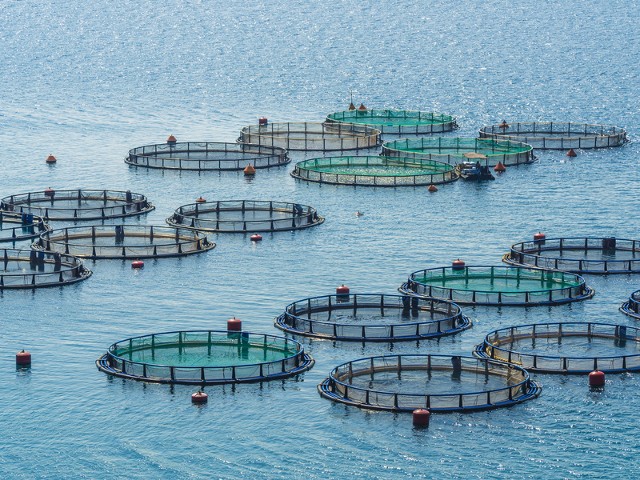Aquaculture is the breeding, farming and harvesting of shellfish, fish, algae, plants and many other kinds of organisms in marine environments. It involves fish-farming, which is perhaps the best-known example of aquaculture, with commonly produced species including salmon, oysters, trout and both soft- and hard-shell clams, but there are many other aspects besides fish-farming. Aquaculture is thus best thought of as the extension of agriculture to the marine domain.
The practice of aquaculture can take place in any suitable body of water, from natural ponds, lakes, marshes, seas and oceans to man-made tanks and specially designed fish hatcheries. Beyond the imperative of providing food, aquaculture is also used to produce bait and game fish, crustaceans, molluscs, ornamental fish, sea vegetables and fish eggs (caviar).
What is Aquaculture?
Besides the general applications of aquaculture described above, many specialist applications of the practice also exist. Stock enhancement or restoration involves growing shellfish and hatchery fish to early maturity and releasing them into the wild to aid the recovery of wild populations suffering from overfishing. Coastal habitats, such as oyster reefs, can also be rebuilt in this fashion.
The growing and harvesting of algae and other plant species can produce an abundance of crops for use in a wide range of applications, from cosmetics and pharmaceuticals to biotechnology and biodiesel production. It is only over the last decade or so that aquaculture has been recognised as a viable means to produce seafood. As such, physical systems, policy and regulation to govern the practice are still being developed in many areas.
Freshwater Aquaculture : This form of aquaculture focuses on freshwater species native to lakes, rivers and streams. Production predominantly takes place in man-made on-land tanks, recirculating systems and ponds. British freshwater aquaculture focusses on salmon, trout and bass, while American freshwater production is dominated by species such as catfish and tilapia.
Marine Aquaculture : Referring to the cultivation of species that reside in the open sea, marine aquaculture can be carried out in man-made ponds and tanks using recirculating aquaculture systems, as with freshwater aquaculture, or in the ocean itself via the use of cages either resting on the sea floor or suspended underwater.
Marine aquaculture in the UK is largely located in Scotland, with the predominant species being salmon, sea trout and rainbow trout. Recent years have also seen growing production of haddock, cod and halibut. US marine aquaculture production, on the other hand, focusses on oysters, mussels, clams and shrimp, alongside smaller quantities of moi, seabass, seabream and yellowtail.
Both forms of aquaculture help to meet the ever-growing demand for seafood and fish products while at the same time ensuring that the industrial output from existing fisheries remains consistent sustainable, supporting the livelihoods of future generations. In Scotland, aquaculture has developed from a niche interest to a booming pillar of the economy, with farmed salmon alone reaching an annual market value of £750 million.
Scotland is now the largest salmon producer in the EU, providing 5,000 jobs and adding around £1 billion to the economy. The rural location of many salmon fisheries has also contributed to the economic regeneration of previously disadvantaged Scottish communities. Aquaculture thus presents many benefits, both environmental and economic, and although there are minor problems and concerns with the practice, the industry continues to grow globally.

